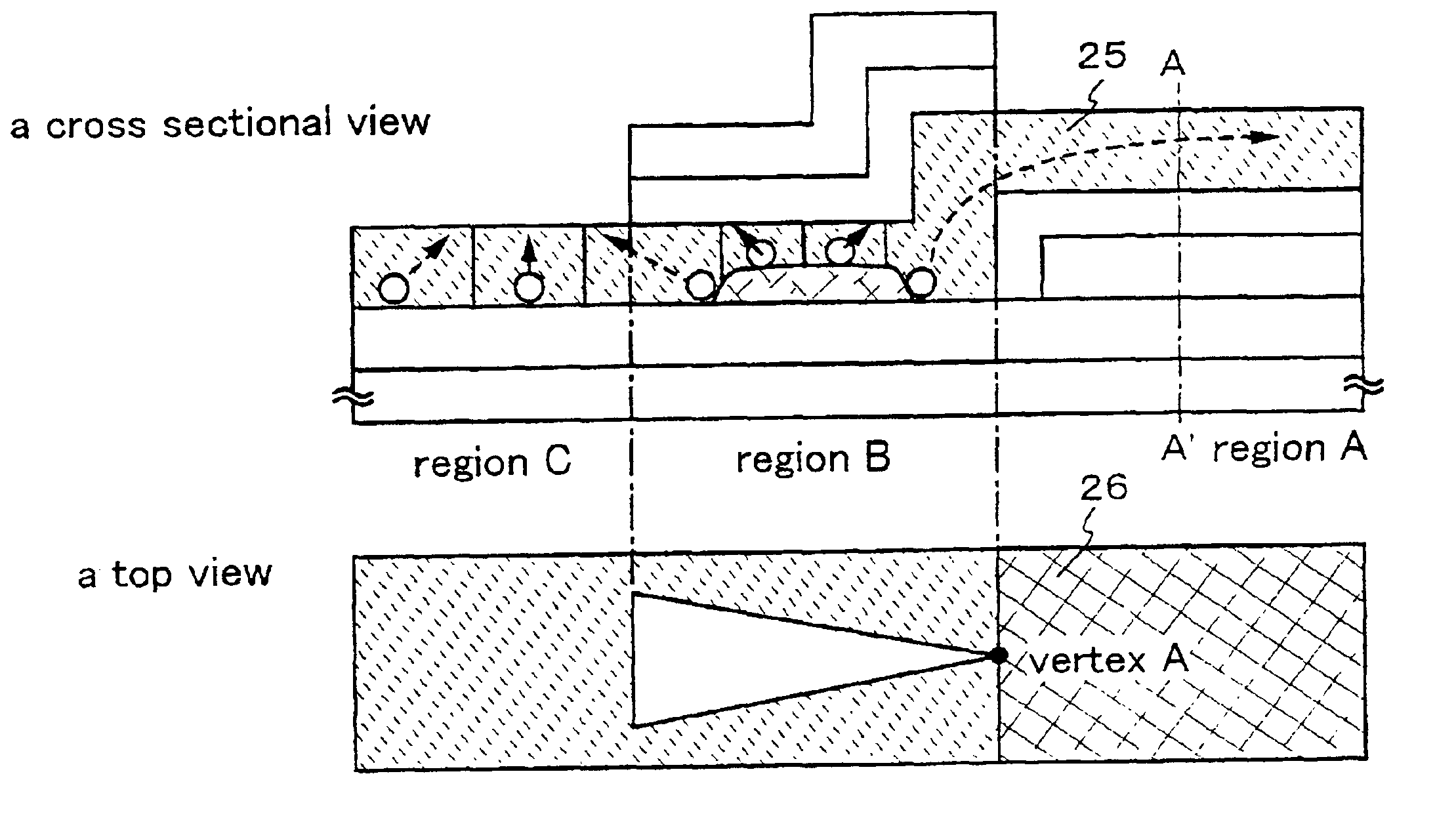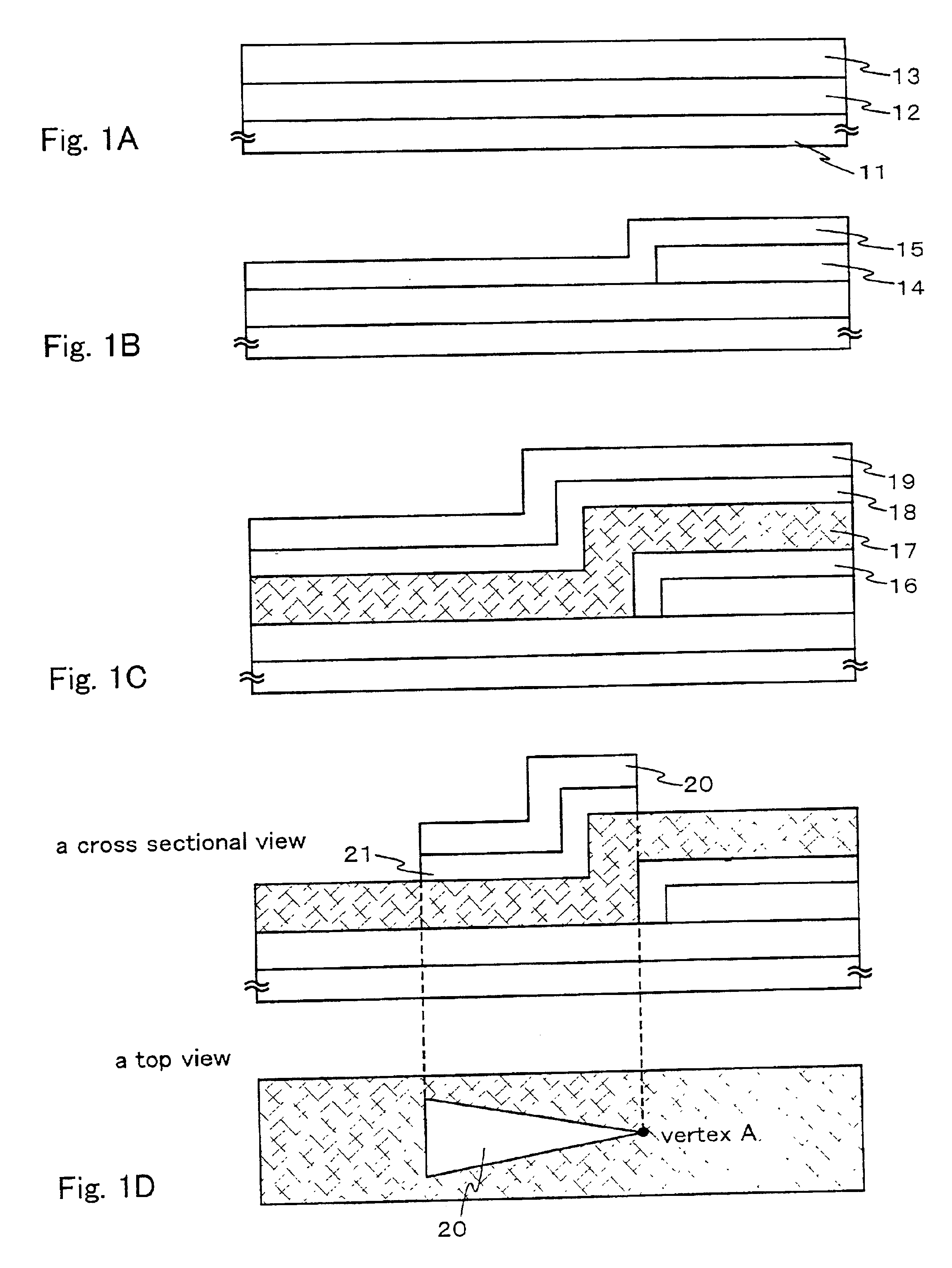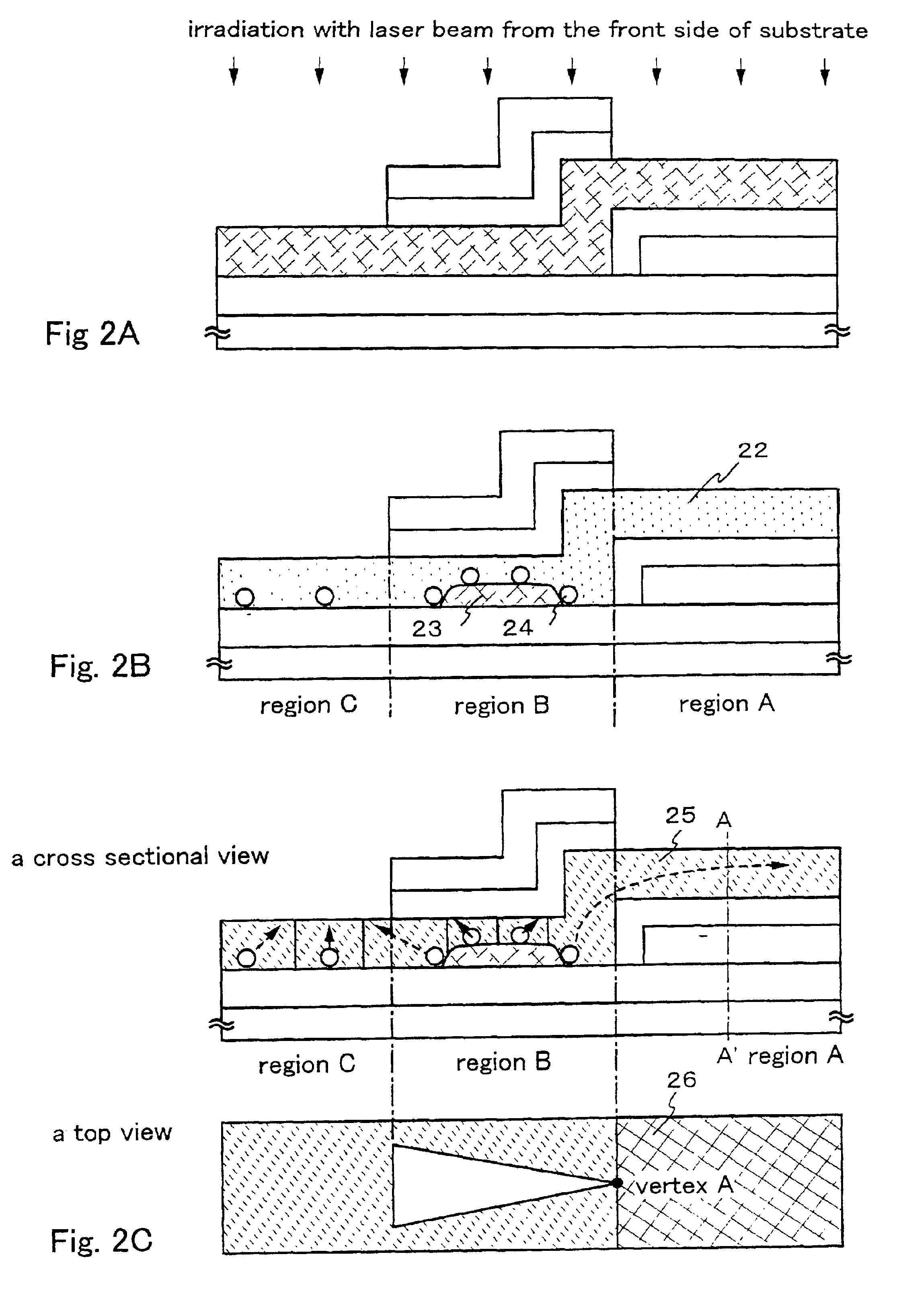Semiconductor device and method of manufacturing the same
a semiconductor and semiconductor technology, applied in the direction of semiconductor devices, electrical devices, transistors, etc., can solve the problems of uneven distribution of crystal grains with irregular grain sizes, inability to specify the position and the size of crystal grains in forming a tft, and almost impossible to remove the adverse effects of crystal grain boundary
- Summary
- Abstract
- Description
- Claims
- Application Information
AI Technical Summary
Benefits of technology
Problems solved by technology
Method used
Image
Examples
embodiment 1
[0074]Embodiment 1 of the present invention will be described with reference to cross sectional views of FIGS. 1A to 2C. In FIGS. 1D and 2C, top views as well as cross sectional views are shown.
[0075]In FIG. 1A, a substrate is denoted by 11. The substrate 11 may be a glass substrate. Examples of the glass substrate include a synthesized quartz glass substrate, and a non-alkaline glass substrate such as a barium borosilicate substrate or an aluminoborosilicate glass substrate. Transparent films such as PC (polycarbonate), PAr (polyarylate), PES (polyether sulfon) and PET (polyethylene telephthalate) may be used instead. For example, Corning No. 7059 glass or No. 1737 glass (product of Corning Incorporated.) is a preferable material for the substrate 11.
[0076]A base insulating film 12 is formed on the substrate 11 by a known method (LPCVD, plasma CVD, or the like) from a silicon nitride film, a silicon oxynitride film, a silicon oxide film or a like other film. In this embodiment, a s...
embodiment 2
[0092]This embodiment shows an example of forming a crystalline semiconductor film by a method different from the one described in Embodiment 1. The only difference between this embodiment and Embodiment 1 is in the step of forming the heat retaining film 13 and the subsequent steps are identical. Therefore explanations for the identical steps are omitted here.
[0093]First, a substrate is prepared as in Embodiment 1. The substrate, denoted by 11, may be a glass substrate. Examples of the glass substrate include a synthesized quartz glass substrate, and a non-alkaline glass substrate such as a barium borosilicate substrate or an aluminoborosilicate glass substrate. Transparent films such as PC (polycarbonate), PAr (polyarylate), PES (polyether sulfon) and PET (polyethylene telephthalate) may be used instead. For example, Corning No. 7059 glass or No. 1737 glass (product of Corning Incorporated) is a preferable material for the substrate 11.
[0094]A base insulating film 12 is formed on ...
embodiment 3
[0099]This embodiment shows an example of forming a crystalline semiconductor film by a method different from the ones described in Embodiments 1 and 2. The only difference between this embodiment and Embodiment 1 is in the step of forming the heat retaining film 13 and the subsequent steps are identical. Therefore explanations for the identical steps are omitted here.
[0100]First, a substrate is prepared as in Embodiment 1. The substrate, denoted by 11, may be a glass substrate. Examples of the glass substrate include a synthesized quartz glass substrate, and a non-alkaline glass substrate such as a barium borosilicate substrate or an aluminoborosilicate glass substrate. Transparent films such as PC (polycarbonate), PAr (polyarylate), PES (polyether sulfon) and PET (polyethylene telephthalate) may be used instead. For example, Corning No. 7059 glass or No. 1737 glass (product of Corning Incorporated) is a preferable material for the substrate 11.
[0101]A base insulating film 12 is fo...
PUM
 Login to View More
Login to View More Abstract
Description
Claims
Application Information
 Login to View More
Login to View More - R&D
- Intellectual Property
- Life Sciences
- Materials
- Tech Scout
- Unparalleled Data Quality
- Higher Quality Content
- 60% Fewer Hallucinations
Browse by: Latest US Patents, China's latest patents, Technical Efficacy Thesaurus, Application Domain, Technology Topic, Popular Technical Reports.
© 2025 PatSnap. All rights reserved.Legal|Privacy policy|Modern Slavery Act Transparency Statement|Sitemap|About US| Contact US: help@patsnap.com



